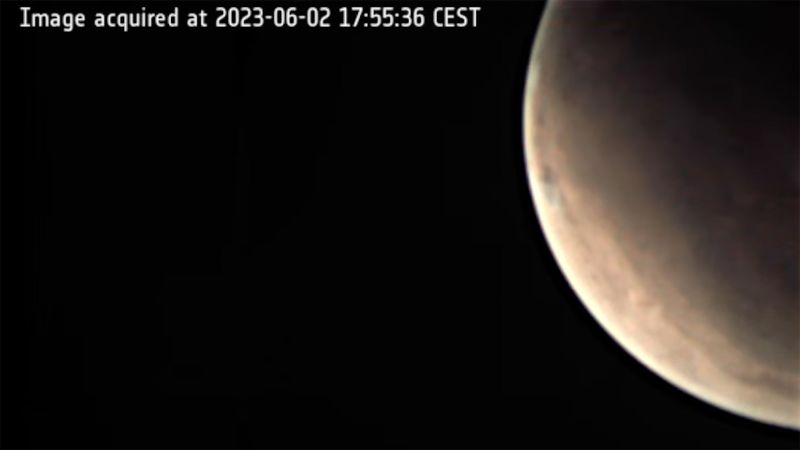
For the first time, spectators on Earth were able to observe Mars in real-time. The European Space Agency broadcasted historical real-time photos from Mars on YouTube.
According to ESA, the photographs displayed the planet in a way that had never been seen before and were posted on YouTube, the ESA Twitter account, and with the hashtag #MarsLIVE.
The ceremony commemorated the 20th anniversary of the agency’s Mars Express orbiter’s launch. The orbiter was sent on a mission to capture three-dimensional pictures of the planet’s surface in order to better understand it.
“Normally, we see images from Mars and know that they were taken days before,” said James Godfrey, spacecraft operations manager at ESA’s mission control center in Darmstadt, Germany, in a statement. “I’m excited to see Mars as it is now — as close to a martian ‘now’ as we can possibly get!”
But haven’t we seen images of Mars before? Yes, but not live, the ESA said.
Normally, the photographs are stored until they can be sent back because data and observations of the red planet are frequently taken when a spacecraft is not in direct touch with Earth, according to the ESA.
The time it takes for a communication to travel through space can range from 3 to 22 minutes, depending on where Mars and Earth are in their orbits around the sun.
According to the ESA, it would take around 17 minutes for the light needed to create the images to travel directly from Mars to Earth, and another minute for it to pass through the servers and wires on Earth in order to start the live feed.
“Note, we’ve never tried anything like this before, so exact travel times for signals on the ground remain a little uncertain,” the agency said in a statement prior to the event.
Because Mars is very bright, no stars could be seen in the images’ backgrounds, according to Colin Wilson, an ESA project scientist.
“If you’re very close to it, it is even brighter,” Wilson noted, and that obscures the surrounding stars in this particular angle the spacecraft is snapping images from.
Mars Express sent out around an hour’s worth of pictures before it got too far away from Mars
According to the agency’s statement ahead of the event, new views of Mars should appear around every 50 seconds over the course of an hour. The ESA scientists did see that Martian communications were temporarily halted due to severe weather at a terrestrial station near Madrid.
The red planet might not have been as crimson as spectators might have imagined, as well. During the live stream, Jorge Hernández Bernal, a member of the Mars Express visual monitoring camera team, observed that Mars was appearing as it would if you captured an image with an iPhone, not as it would be seen with the naked eye.
“Color is a very complex topic related to the way our eyes work,” he noted. And the spacecraft’s images also undergo some processing, to remove “noise” — or unwanted disturbances in the imagery — that can also alter their appearance.
Mars Express sent out around an hour’s worth of pictures before it got too far away from Mars to keep taking pictures of it. Additional updates will be published on Twitter, according to scientists.
